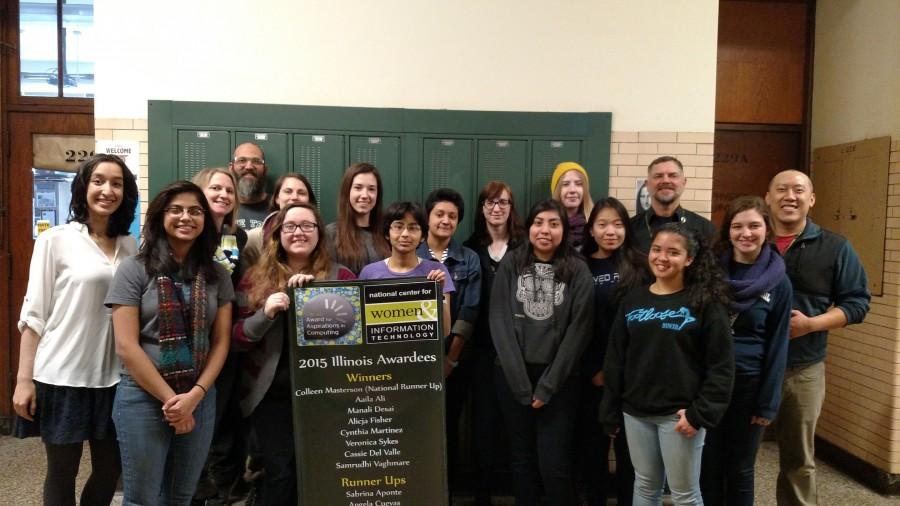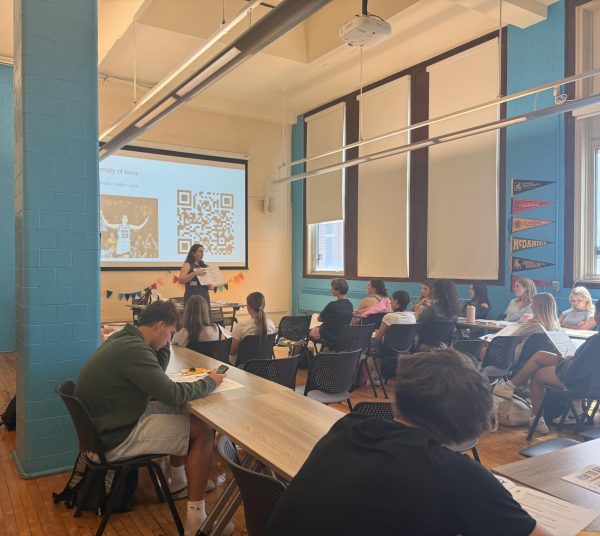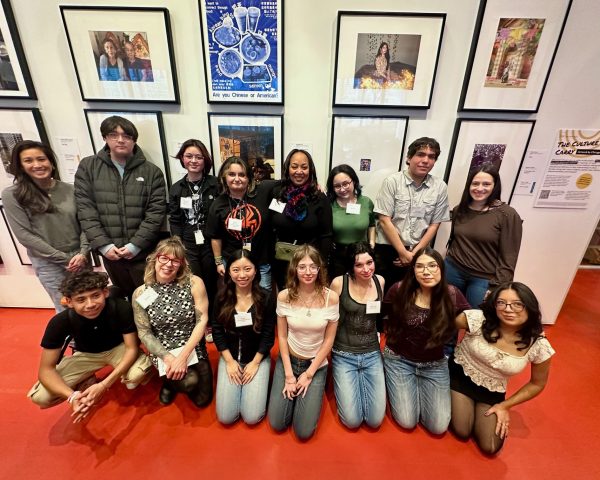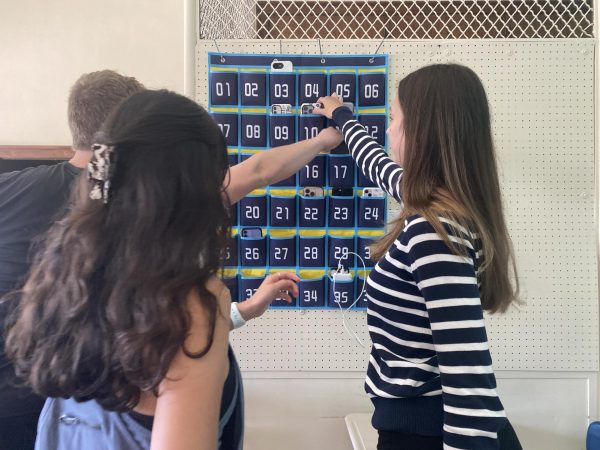Women seek future in engineering
Winners of Aspirtations in Computing award from NCWIT aim to sway the gender imbalance in STEM fields.
While women make up 48 percent of workers in all occupations, men have dominated engineering careers for years; however, with awareness increasing more girls are going into the field than ever before.
According to the Congressional Joint Economic Committee, 14 percent of the engineering workforce is made up of women. This percentage has risen from 5.8 percent in the early 1980s. Programs such as GEMS (Girls in Engineering, Math, and Science) at Lane are helping to encourage more girls to explore this field.
GEMS President, Colleen Masterson, Div. 667, is thinking about going into software or computer engineering and believes that encouraging girls is necessary.
“It’s important to get women to go into engineering because of the job openings available,” Masterson said. “There is nobody right now to fill the jobs.”
Masterson was originally intimidated by the stigma surrounding the gender imbalance.
“When I first joined the robotics team, I pictured the team being all older guys that were smarter than me,” she said.
Though worried about this imbalance, Masterson had her assumptions proven wrong and was welcomed onto the team.
“We have a team of more girls than guys and of all different cultural backgrounds,” Masterson said. “I am not the youngest on the team.”
She also believes that she is not greatly affected by the gender imbalance in Lane’s engineering classes.
“Right now Lane is doing a great job of including girls in their engineering courses,” she said.
GEMS has helped with this inclusion by encouraging girls to pursue careers in engineering.
“Many girls lose interest in STEM careers because they aren’t aware of all of the different jobs out there,” Masterson said. “Our main goal is to get girls to find different types of fields they are interested in and allow them to further explore the possibility of jobs such as engineering.”
Cynthia Martinez, Div. 666, is also involved with engineering at Lane and believes that there is still an issue with the gender imbalance at Lane; however, they are working towards fixing it with the GEMS club and GEMS robotics team.
“These sorts of programs help women feel empowered and give them role models to look up to,” Martinez said.
Martinez believes that along with the lack of female role models, sexism in the workplace is one of the fundamental problems with engineering.
“When women actually join the tech industry, they are often harassed by other co-workers, discouraged from promoting their own ideas, and, in some cases, given tasks that are less difficult because the one who assigned the task believe women are incapable,” Martinez said.
According to the Los Angeles Times, surveys show 23 percent to 66 percent of women report experiencing sexual harassment or seeing it happen to others when working in the male dominated tech industry. They also reported that many women also experience hostile, demeaning, or condescending treatment.
However, Masterson has seen inclusion of women into engineering jobs outside of school.
“Most offices have started addressing the problem and treating women with more respect,” Masterson said. “For example, Microsoft, Google, and a host of other companies hold a program called ‘Girls Who Code Summer Immersion program’ which is specifically designed to help get women into engineering.”
Lane alumna and structural engineer Joanna Klimczak, class of 2009, works for a company where only four of the 40 engineers that work there are women. Klimczak however does not see any sexism at her workplace.
However, she does believe that the issue starts with sexism at a younger age.
“As young girls, we are discouraged to go into fields that are ‘too technical’ and it’s time to put a stop to that,” Klimczak said.
Martinez also believes the problem begins as children.
“Girls are often automatically associated with an interest in dolls, fashion sets, or makeup kits while the boys are the ones who play with things like Legos, construction sets, and tools,” Martinez said.
She believes this idea is perpetuated by the packaging on the toys.
“I’ve seen a whole Home Depot section that has a wide selection of pretend hardware sets and power tools and on every package the picture has a boy playing with that toy,” Martinez said. “Not one had a girl playing with the toy.”
However, even with these obstacles, many girls have gone into engineering because it is what they truly enjoy.
Both Martinez and Masterson, along with many other girls from Lane, were winners receiving the Aspirations in Computing award from NCWIT (National Center for Women in Information technology), a non-profit organization that strives to get more women interested in computing.
At this year’s awards, Masterson received national runner-up. Her application was filled with achievements.
“I am the president of GEMS, event coordinator for CGC (Chicago Girls in Computing), I run presentations at places such as Microsoft, I build robots full time, and I had a job as a software engineer,” she said.
Along with this Masterson has aspirations to double major in Computer Science and Business, become a product manager, and then help run a non-profit organization such as Girls Develop It or Girls Who Code.
All of the work that is being put into making a change in the gender imbalance is making a difference. This is shown by girls such as Martinez going into engineering despite having to make an extra effort to go into this field.
“In the end, [the gender imbalance] is a much greater motivator than it is discouraging because I think it is better to take chances in something that you love than being afraid and regretting it later on,” Martinez said.
Your donations directly fund the Lane Tech student journalism program—covering essential costs like website hosting and technology not supported by our school or district. Your generosity empowers our student reporters to investigate, write, and publish impactful stories that matter to our school community.
This website is more than a publishing platform—it's an archive, a research tool, and a source of truth. Every dollar helps us preserve and grow this resource so future students can learn from and build on the work being done today.
Thank you for supporting the next generation of journalists at Lane Tech College Prep!

Cori Meyers is one of the online editors and one of the managing editors for The Warrior. She is a senior at Lane and is also captain of the majorettes....









